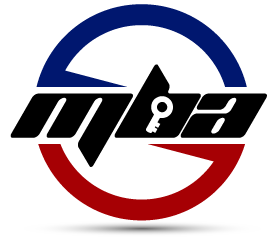In this episode, Ron Ross explains the Business Agility Manifesto and helps us to understand the role business knowledge plays in enhancing business agility.
After listening to this episode, you'll understand:
- Why the Business Agility Manifesto is and why it was created
- How business knowledge can enhance an organization’s agility
- What you can do to help your organization reduce time to develop solutions
Show Notes
Agile has had a huge impact on the way we work. Agile thinking and Agile software development is evolving rapidly and is moving beyond the confines of IT. It’s starting to focus on the organizational or social dimension of agility, energizing the work of teams, organizations, and leadership. But Agile itself does not guarantee business agility.
Today there are deep structural problems in the way we handle business knowledge that severely limits of any social or organizational remedies such as Agile practices. The Business Agility Manifesto identifies root causes and long term fundamentals that we need to address to achieve business agility.
Essentially, the Business Agility Manifesto explains what the business and practitioners need to do to adjust and thrive in the new reality of the knowledge age. Business knowledge is a corporate asset and it needs to be treated as such.
We as practitioners need to reshape how business knowledge is handled as much for our own and the project’s benefit as for our organization’s benefit.
The Business Agility Manifesto
The Business Agility Manifesto calls for the appropriate infrastructure for retaining business knowledge. This is essential for managing perpetual change. If an Agile approach isn’t addressing that problem, things aren’t going to improve no matter how clever or invigorating your Agile approach might be.
The manifesto also mentions the inclusion and delivery of business knowledge into projects and business solutions. This means that we need to apply common business vocabulary and rules to our solutions.
It’s critical that everyone has access to the business knowledge and can help evolve that knowledge. This requires us to change the way we retain and manage that knowledge and create a single source of truth.
To achieve business agility, projects need to be justified directly on the basis of value creation for end customers and the business strategy, not on the basis of software features. We need to emphasize the importance of getting the right results, not just getting results fast.
Listen to the full episode to understand the role business knowledge plays in business agility and whay you can do to enhance your organizations agility.
Your Homework
On your next project or initiative, look for existing sources of business rules. If you’re lucky, there are existing projects from which you can identify and reuse the business rules.
If that doesn’t work, look at all of the relevant contracts, agreements, memos, and anything else that documents the company’s obligations and commitments that are relevant to the focus of the project. That documentation represents a source of business rules, although it needs to be disambiguated.
If no such documentation exists, you’ll need to elicit business rules from subject matter experts.
Links mentioned in this episode:
- The Business Agility Manifesto
- Business Rules Community website
- Ron’s website: Business Rules Solutions

Ron Ross
Co-Founder of Business Rule Solutions, LLC (BRS)
Ron Ross is recognized internationally as the “father of business rules”. He is the author of ten professional books including the groundbreaking first book on business rules The Business Rule Book. Ron is the co-author of the Business Agility Manifesto and was also a contributor to the IIBA’s BABOK v3.
Thank you for listening to the program
To get more valuable content to enhance your skills and advance your career, you can subscribe on iTunes.
Also, reviews on iTunes are highly appreciated! I read each review and it helps keep me motivated to continue to bring you valuable content each week.



